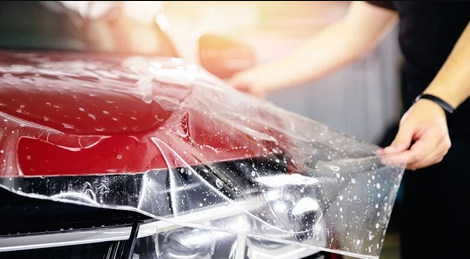The Value of Paint Defense Movie in Preserving Your Car's End up
Repaint Defense Movie (PPF) arises as an essential player in this sector, supplying a virtually invisible guard that fights the day-to-day dangers of the road. This leads us to consider-- what makes PPF an essential option for auto fanatics and proprietors alike?
Understanding Paint Protection Movie
Paint security movie (PPF), commonly referred to as a "clear bra," is a thermoplastic urethane movie put on the painted surface areas of vehicles to secure them from damages triggered by rocks, pests, and small abrasions. This innovative film is meticulously crafted to make sure optimum quality and is designed to be virtually invisible when appropriately used. It functions as a sacrificial layer, taking in the effect of day-to-day hazards, consequently maintaining the automobile's immaculate appearance.
PPF is normally made up of numerous layers, each offering a particular feature. The leading layer is a clear coat that gives a shiny coating while improving UV resistance, protecting against the film from yellowing over time.

Advantages of Making Use Of PPF
While maintaining the excellent look of a vehicle is a top priority for numerous owners, utilizing paint protection film (PPF) offers a number of critical benefits. Principal among these is the superior protection versus physical damage. PPF functions as a robust obstacle, protecting the car's paint from road debris, rocks, and minor abrasions that can happen throughout routine driving. This protection is important in protecting against unsightly chips and scratches, therefore preserving the vehicle's visual appeal and resale value.
An additional substantial benefit of PPF is its resistance to environmental aspects. paint protection film. Unsafe elements such as UV rays, bird droppings, and acid rainfall can slowly weaken an automobile's surface. PPF offers a protective layer that reduces the impacts of these components, minimizing paint fading and maintaining a shiny surface area with time. In addition, PPF is made to be virtually unseen, making sure that the original design and color of the vehicle remain prominently presented without modification.
Additionally, the self-healing homes of advanced PPF add to its charm. When subjected to warmth, the film can mend minor scratches and swirl marks, making certain the car maintains a remarkable outside. Jointly, these benefits make PPF a vital tool for lorry conservation.
How PPF Works
To recognize the efficiency of paint protection movie (PPF), it is essential to dig try this into its structure and application procedure. PPF is made up of a multi-layered product, normally polyurethane or a comparable polymer.
The application process of PPF is thorough, calling for experienced technicians to guarantee a smooth and bubble-free coating. Applied with a specialized adhesive, PPF is carefully positioned and extended over the desired locations.
When set up, PPF gives a nearly invisible barrier that protects the car's original paintwork, preserving its visual charm and resale worth over time.
PPF Vs. Other Safety Alternatives
When considering automobile paint protection, owners have several choices, each with its distinctive benefits and constraints. Paint Protection Movie (PPF) is renowned for its durable safety top qualities, providing a nearly unnoticeable obstacle that shields against scrapes, chips, and ecological pollutants. Its self-healing Recommended Site buildings even more enhance its value, enabling minor abrasions to disappear with exposure to warm.

Plastic covers, while using aesthetic modification, do not inherently shield the underlying paint from chips or scrapes, making them less perfect for pure protection functions. Each option fits various requirements and budget plans, however, for those prioritizing comprehensive, lasting security, PPF stands apart as the remarkable selection. Its combination of toughness, self-healing modern technology, and marginal maintenance demands makes it a preferred choice for preserving a car's immaculate surface.
Tips for Keeping PPF

Examine the film carefully for any kind of indications of training or bubbling, especially around the edges. If you identify locations that require repair service, getting in touch with a professional installer is advised to make sure correct handling.
Furthermore, while PPF supplies outstanding security against UV rays, car parking your lorry in shaded areas whenever feasible can even more prolong the film's life-span. Think look at this site about using a specialized PPF sealant for added security versus environmental pollutants.
Verdict
In conclusion, Paint Security Movie (PPF) works as a vital element in maintaining a vehicle's visual and monetary value. By supplying a nearly undetectable obstacle, PPF successfully stops damage from roadway debris and environmental elements. Its self-healing buildings even more boost its utility by guaranteeing small abrasions do not permanently mar the car's surface area. When contrasted to other protective steps, PPF provides superior protection and long life, making it a crucial investment for maintaining a car's surface gradually.